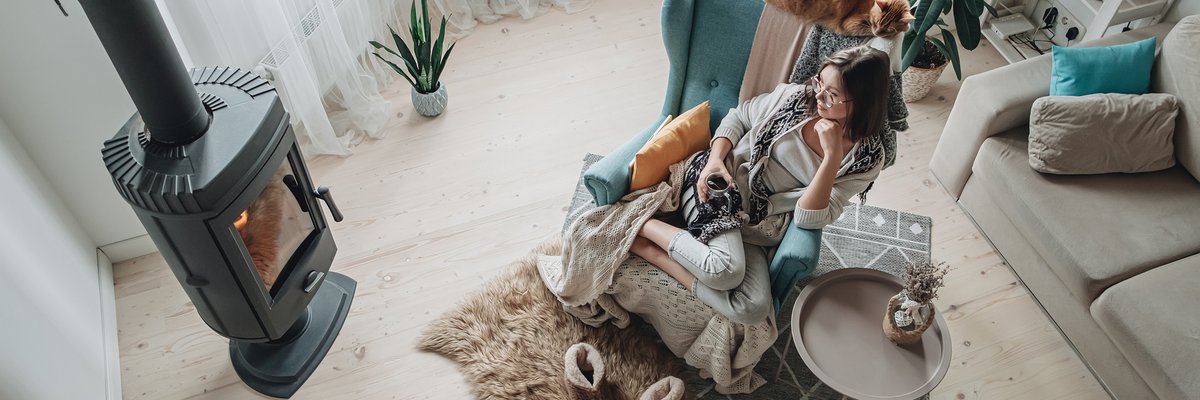8 Steps to Maintain Your Home During Winter
KEY POINTS
- Various parts of your home (like the roof and plumbing) are vulnerable to extreme weather and cold temperatures.
- You'll want to ensure your furnace is in good working order because you'll be relying on it through the winter.
- If pipes freeze, they can burst and cause water damage inside your home.
Winter storms can put your home at risk.
When the temperature drops, the cold wind blows, and snow falls from the sky, homeowners have to be ready. I'm sure you already knew that homeownership has costs beyond just your mortgage loan. But if you're a new homeowner, you might be surprised by all you have to do (and pay for). After all, all those home maintenance costs are on your shoulders, not a landlord's. If you don't want to drain your emergency fund to pay for a winter-related home mishap, check out this to-do list so you can be ready for whatever the cold weather throws at you -- and your home.
1. Check on your roof
Your home's roof is your shelter from winter storms, so you want it to be in good shape. Have a walk around the outside of your house and look for anything amiss with the roof, like sagging or curled shingles. If anything seems hinky, it's a good idea to call on a roof inspector to have a closer look and recommend crucial repairs to tackle ahead of winter's full brunt of cold precipitation.
2. Clean out your gutters
You can hire out for this task, but if you're fairly comfortable on a ladder, it's worth getting on your work gloves and making sure you don't have leaves and other debris clogging up your gutters. If you neglect this task, you may end up with ice dams. This is when snow and ice melts on your roof during the day, then refreezes overnight when the temperature drops. If your gutters are clogged, the water has nowhere to go, and the ice buildup, melting, and refreezing can cause damage to your roof, gutters, and even the walls and ceilings indoors.
3. Keep your pipes from freezing
Frozen burst pipes are one of those very special and expensive potential hazards of winter. Homeowners insurance does often cover plumbing issues, including damage from frozen pipes, but it's a hazard best avoided. The American Red Cross notes that it's best to take a multipronged approach. Insulate pipes in unheated areas or against exterior walls, and for outdoor faucets, turn off the water supply from inside and keep the outside valves open, so water can drain out without freezing and expanding, breaking the pipe.
4. Get your furnace inspected and serviced
It's a good idea to call in an HVAC professional to check your furnace and ensure it's in good working order, as you'll be relying on it until spring. Energy Star notes that this kind of maintenance will include checking the temperature settings and lubricating moving parts in the system. While you're at it, check the filters and change them if necessary. You don't want to be breathing in dust and other allergens.
5. Have your fireplace and chimney inspected
If your home has a wood-burning fireplace, call in an inspector before you use it in the winter. The Chimney Safety Institute of America recommends that your chimney and fireplace be inspected every year, and a certified inspector will check for cracks, leaks, and other damage, along with creosote buildup and anything that increases your risk of house fire or carbon monoxide entering your home. These can be deadly, so this is an extremely important winter maintenance step.
6. Check windows and doors for drafts
You don't want your precious heated air escaping to the outside, so be sure to check any openings in your home (like doors and windows) for drafts when it gets cold. You may need to caulk or otherwise seal openings and install new weather stripping. You can purchase draft guards for under your doors, or in a pinch, use a heavy towel or blanket to keep the warm air in and the cold air out.
7. Have any loose tree limbs removed
I don't recommend climbing large trees yourself to check the strength of the limbs and cut loose ones down with a chainsaw -- this is likely a job to leave to the professionals. If you do have large trees near your home, though, it's worth calling a tree service to come have a look. The last thing you want to deal with this winter is needing to file a homeowners insurance claim for repairs after a snow-laden tree limb splinters and falls on your home.
8. Get ready to shovel snow
Finally, it's a great time to head out to your garage or basement (or wherever you keep your winter equipment) and check out the state of your snow shovels and supply of ice melt. If it looks as if those shovels have seen better days or your trusty bag of rock salt from last year is empty, head over to your local hardware store to get some new supplies. You're going to need them to keep snow and ice cleared away from your home and to keep your sidewalks and driveway safe to walk on.
Winter can be a beautiful time of year -- who doesn't love looking at snow-covered trees and sunshine on sparkling walkways? But if you don't want it to cost you, get a jump on these home maintenance tasks.
Our Research Expert



